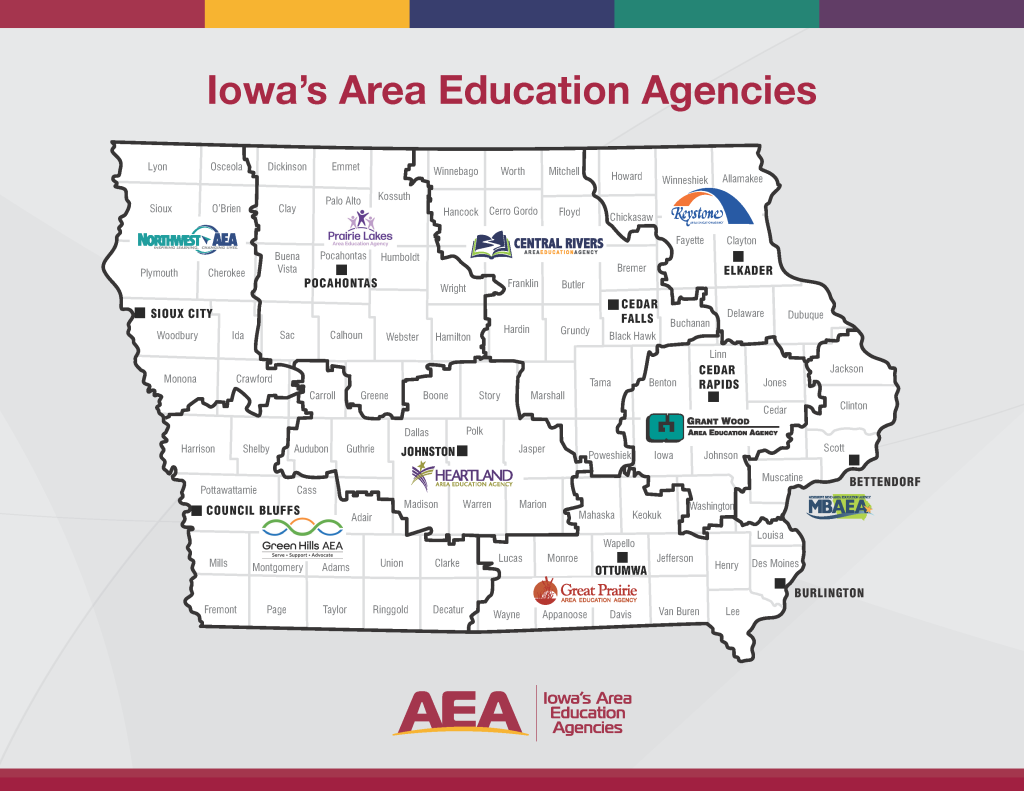Learn More About Central Rivers Area Education Agency

Iowa’s educational structure dates back to 1858, but the first regional services were not established until 1910 when Iowa school districts numbered over 5,000. In that year, county superintendents were appointed to oversee the schools in each county.
Over the years, the number of districts steadily declined. In 1957, the state legislature allowed counties to jointly employ one superintendent to handle the smaller number of districts. Then, in 1965, the legislature approved the merger of two or more counties into joint county school systems. But problems developed under this new arrangement. The availability of services varied greatly from one county or joint-county system to another.
The state legislature responded in 1974 by replacing county systems with 15 area education agencies to provide equity across the state. There are now nine AEAs due to voluntary mergers across the state. Since its inception, Iowa’s AEA system has been widely regarded as one of the finest systems of intermediate services in the country.
To learn more about Iowa’s AEAs, visit Iowa’s AEAs website.
